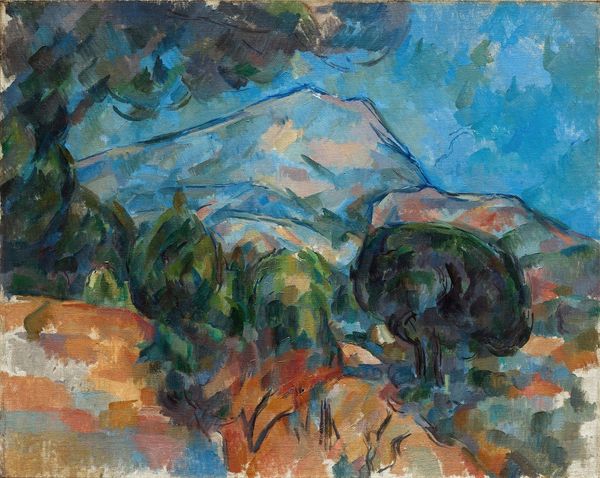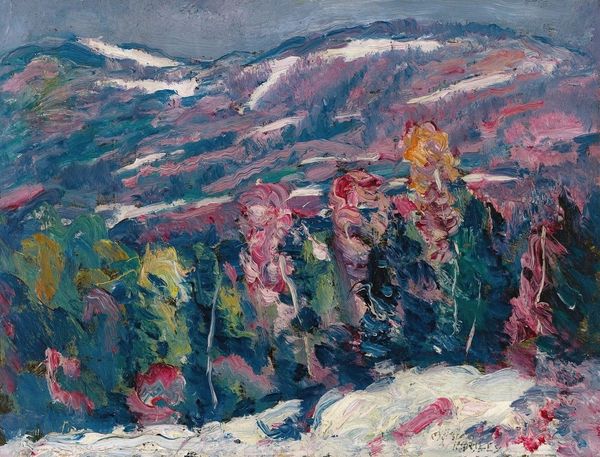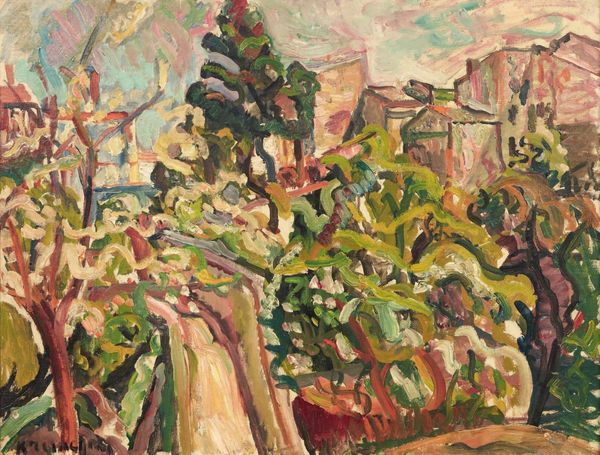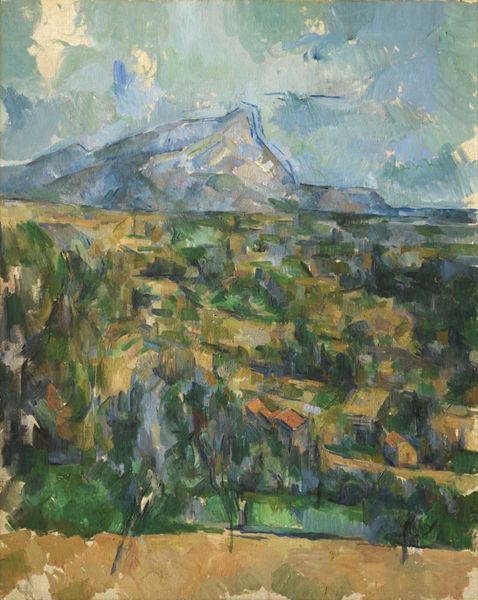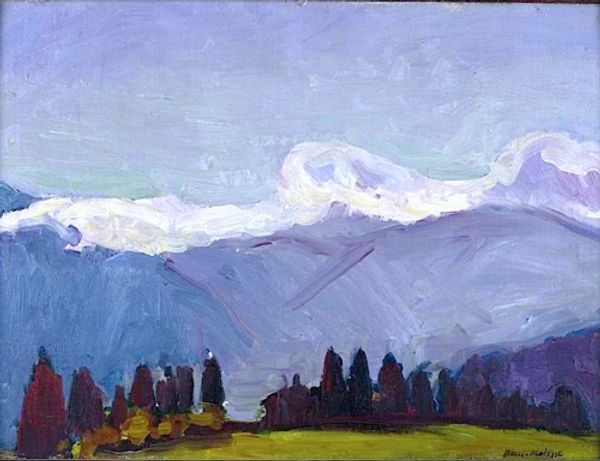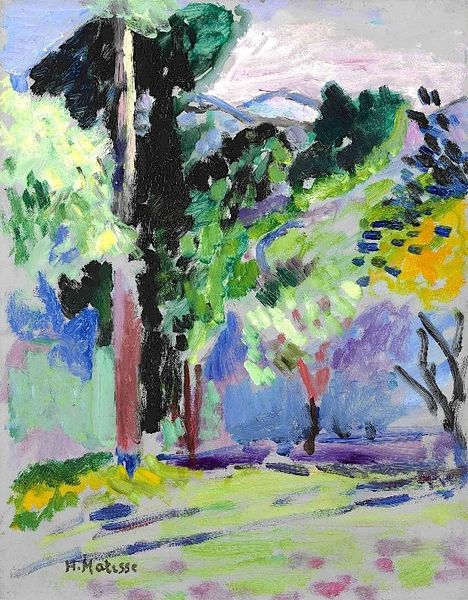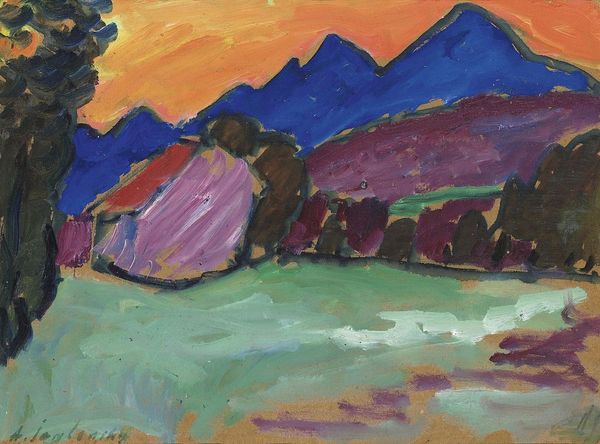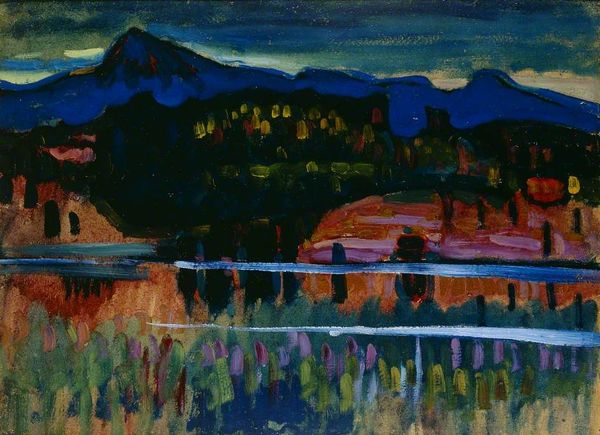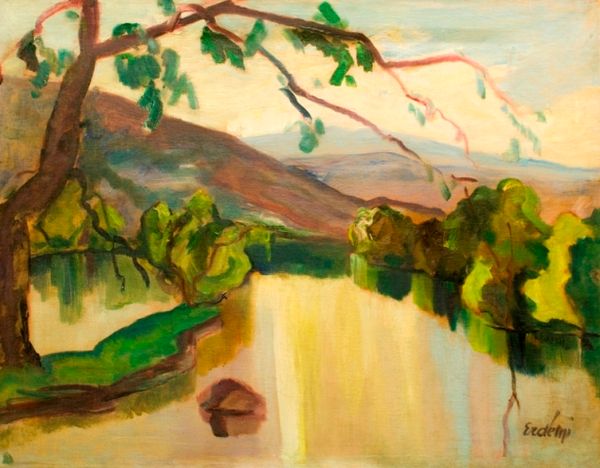
Copyright: Public domain US
Editor: We’re looking at "Alpes Maritimes," an oil on canvas painted in 1914 by John Duncan Fergusson. It's such a vibrant landscape, almost aggressively so. The colors clash, but somehow it works. What do you see in this piece, especially considering its bold use of color and form? Curator: Fergusson offers us a symphony of sensations through the landscape. Observe how the mountain range isn’t just a geological formation, but also a symbol of permanence, perhaps even spiritual aspiration. But notice how he undermines that with those jarring colors! How does that disruption of our expectation of a harmonious landscape speak to the viewer, do you think? Editor: Well, it makes me uneasy, a bit off-balance. Maybe that’s the point? Is he challenging our perception of nature, not just depicting it? Curator: Precisely. Consider the cultural memory embedded in landscapes, passed through generations in artistic and cultural expressions. He both acknowledges that heritage and subverts it through the fauvist color palette. This pushes the viewer into the artist's subjective experience, rather than a shared collective vision. What’s retained in this painting, versus what’s dismissed, is a constant source of tension, like a psychic battleground on canvas. Editor: So, the painting becomes more than just a pretty picture; it’s a cultural commentary and almost a personal statement about seeing the world. That’s pretty intense! Curator: Indeed! Fergusson invites us to reflect not just on what we see, but how cultural history shapes our very perceptions. It is in these fractured, vibrant depictions, a mirror to our own complex inner landscapes, too. Editor: I’ll never look at a landscape painting the same way again. Thanks for untangling that!
Comments
No comments
Be the first to comment and join the conversation on the ultimate creative platform.

